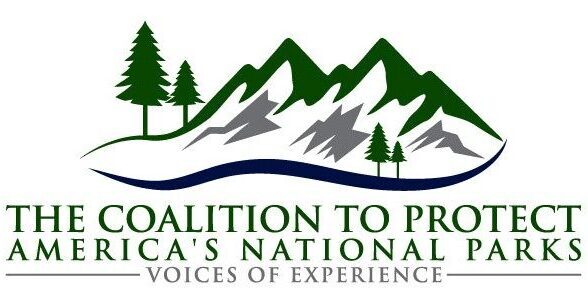Coalition to Protect America’s National Parks * Energy Alabama * GASP National Parks Conservation Association * Sierra Club Alabama Chapter
November 7, 2025
Mr. Aubrey H. White III
Chief, Air Division
Alabama Department of Environmental Management
P.O. Box 301463
Montgomery, AL 36130-1463
ah*@**********ma.gov
Submitted via electronic mail
Dear Mr. White,
On behalf of the undersigned organizations across Alabama, we write to share our deep shared value for clean air in our public lands and communities. We are concerned with the proposed Regional Haze State Implementation Plan (SIP) for the Second Planning Period1Alabama Department of Environmental Management, Revised Notice of Public Hearing, September 24, 2025: https://adem.alabama.gov/sites/default/files/2025-09/09-25sip.html that has been put forth by the Alabama Department of Environmental Management (ADEM). ADEM has the once-in-a-decade opportunity to significantly reduce air pollution to improve visibility and health benefits in beloved places like Sipsey Wilderness Area and our communities across the state. But the proposed SIP fails to do just that—the plan falls short of the state’s obligation to reduce haze pollution and improve air quality for our parks and communities.
The organizations represented on this letter are concerned with the pollution from coal-fired power plants, pulp and paper mills, cement manufacturing, cars and trucks, and other industrial sources operating in Alabama that emit haze-causing pollution. Pollution from Alabama’s industrial facilities harms visibility and air quality in 24 regional protected Class I areas, including Alabama’s own Sipsey Wilderness Area and nearby Great Smoky Mountains National Park. Communitiesnear Alabama’s coal-fired power plants and industrial facilities, particularly in Birmingham and Mobile, disproportionately experience negative health impacts from these sources. We are deeply concerned with ADEM’s action, which will allow controllable pollution to continue dirtying the air in our parks and communities.
Alabama is a state of unique cultural and natural resources that deserve protection and consideration. Sipsey WildernessArea is one of the first Wilderness Areas set aside by Congress in the eastern United States and is home to the only Wild and Scenic River in Alabama, the Sipsey Fork of the Black Warrior River. Alabamans and visitors to the state enjoy extensive outdoor recreation opportunities in Sipsey and other state and national parks; outdoor recreation is an economic driver supporting over 65,000 jobs and adding $6.6 billion to the state’s economy.2Bureau of Economic Analysis, Outdoor Recreation Satellite Account, 2023. https://apps.bea.gov/data/special-topics/orsa/summary-sheets/ORSA%20-%20Alabama.pdf
Beyond protecting our treasured places and recreation economy, ADEM has both state and federal obligations under Title VI of the Civil Rights Act to meaningfully consider communities of color and communities living below the poverty line in its regional haze state implementation plan. There are several industrial sources in Alabama whose air pollution is harming these communities, the same polluters causing hazy skies and scenic views. For example, Alabama Power’s James H. Miller Jr. Electric Generating Plant in Birmingham is a significant contributor to ozone concentrations that exacerbates respiratory problems. Likewise, sulfur dioxide emissions from Alabama Power’s James M. Barry ElectricGenerating Plant near Mobile impacts Africatown and other communities nearby. Georgia Pacific Brewton LLC, a paper mill, pollutes Brewton with its smog and soot pollution. Drummond Company Inc., an iron and steel mill in Birmingham, impacts Tarrant communities and is located in an area where more than half of the residents are people of color and almost 16% live below the poverty line. These polluters also drive haze problems and need stronger emission controls to protect our parks and people.
ADEM’s proposed SIP fails to make reasonable progress to cut pollution harming national parks and wilderness areas by improperly concluding that no new pollution reductions are warranted, except for a minor NOx reduction due to a fuel switch at the Lhoist facility. ADEM’s plan will allow for over 52,000 tons of controllable visibility impairing pollution to continue being emitted every year from Alabama’s coal-fired power plants and industrial facilities.
Additionally, ADEM’s plan relies on the flawed air modeling work from the Southeast regional planning organization VISTAS (Visibility Improvement States and Tribal Association of the Southeast), which ignored nitrogen oxides (NOx) and particulate matter (PM) emissions and excluded more than 20 major emitting sources from review. ADEM only evaluated one facility for pollution control options but then did not recommend any pollution control options for that facility.
For ADEM to fulfill its Regional Haze obligations under the Clean Air Act and make reasonable progress, we ask that the state revise the proposed SIP by:
- Selecting and reviewing cost-effective control options for both NOx and SO2 pollutants from the major emitting sources that ADEM did not select for review, such as:
- James Miller Jr. Power Plant – Jefferson County
- Transcontinental Gas Pipeline Compressor – Marengo County
- Mahrt Mill – Russell County
- Ernest Gaston Power Plant – Shelby County
- International Paper Company – Autauga County
- Drummond Company – Jefferson County
- James Barry Power Plant – Mobile County
- Requiring the most stringent SO2 control option for the only facility selected (Lhoist–Montevallo lime manufacturing facility) to achieve the greatest possible emission reductions.
- Establishing a cost-effectiveness threshold for reasonable progress that is in line with other states.
- Thoroughly assess the impact of haze-forming pollution from the state’s sources on surrounding communities.
We oppose ADEM’s proposed SIP as failing to fulfill the state’s Regional Haze obligations and ignoring a significantopportunity to preserve scenic vistas for future generations and protect the health of all who live here and enjoy Alabama’s treasured public lands.
Sincerely,
|
Sheree Martin |
Jilisa Milton |
|
Joshua Jenkins |
Nancy Muse Baughn Millner |
|
Phil Francis, Jr. |
